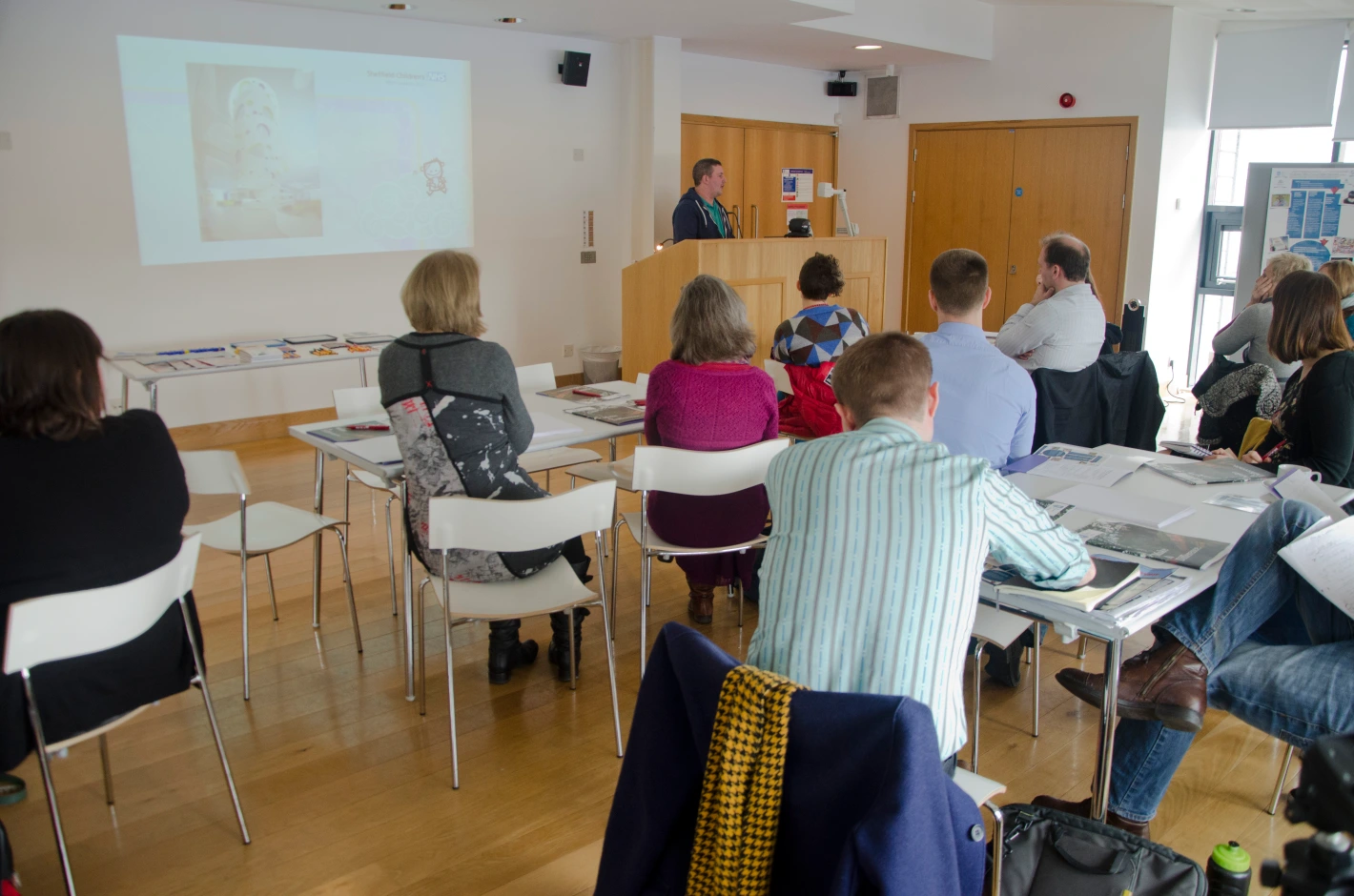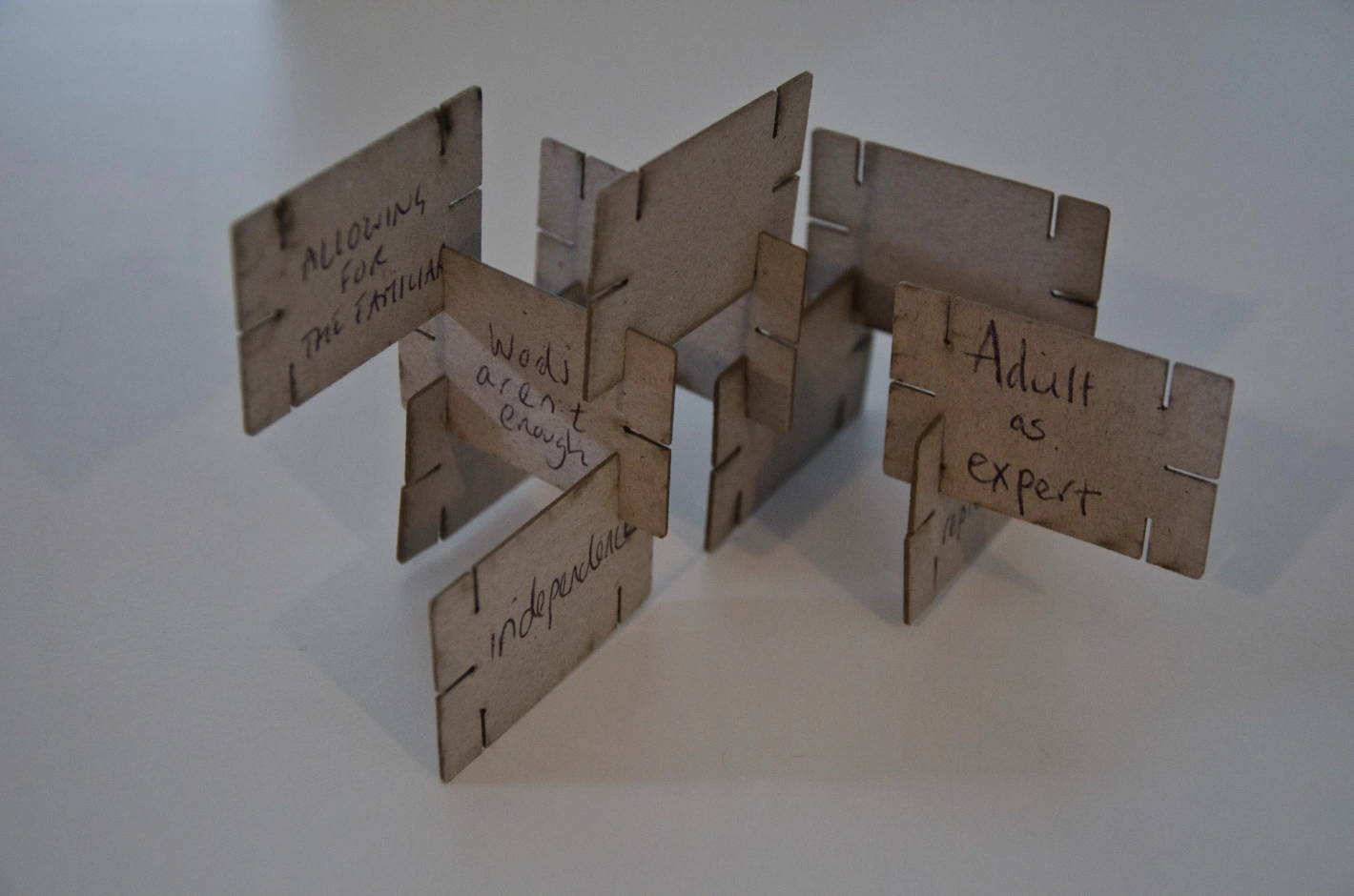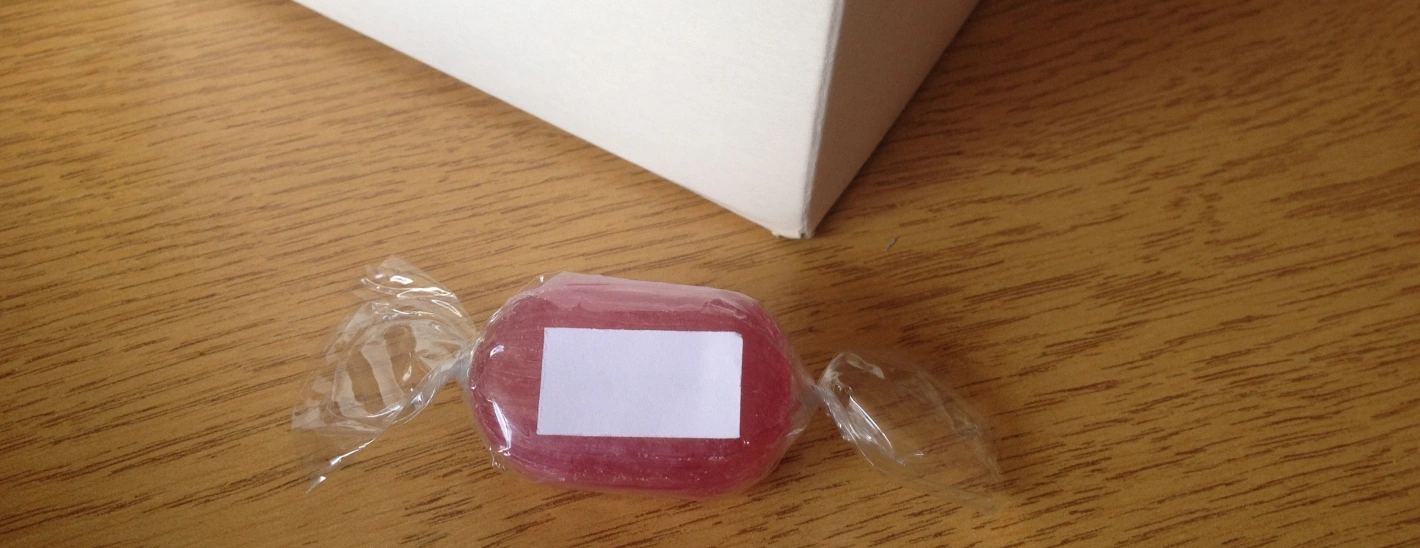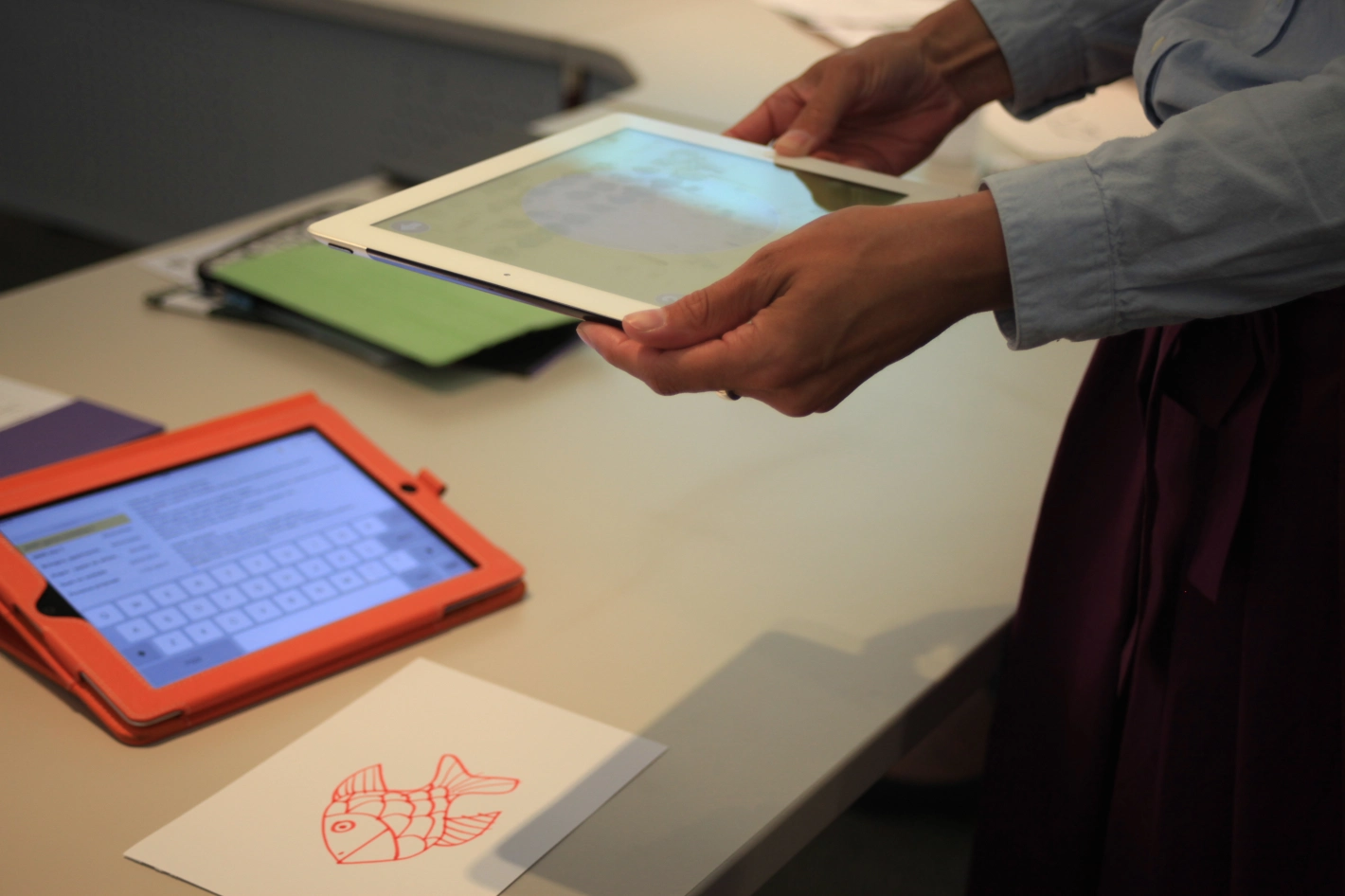Developing Videogames & Play for Hospitalised Children
January 2014 - December 2014
Funded by AHRC (AH/L009366/1)
Co-I: Dylan Yamada-Rice (formerly) University of Sheffield; Stripey Design; Distinctive Games; NHS Trusts and Caroline Claisse and Xinglin Sun, MA Information Experience Design students, RCA
This was a one-year inter-disciplinary network project that used multimodal and experiemental design practices to inform videogame design for hospitalised children.
Methodology
The methodology centred on a series of knowledge exchange workshops that rotated to prioritise the concerns of each the key stakeholders
- Hospital & Medical Perspectives (March 26th 2014)
- Academic Perspectives (May 9th 2014)
- Videogame Designers Perspectives (June 2nd 2014)
A final session brought these perspectives together to reach a series of emerging themes.






Knowledge Exchange Workshop 1: Hospital & Medical Perspectives
The first workshop focused on hospital and medical perspectives to focus on the potential of play for supporting children in hospital and recovery space. Also, how to inform the game industry for creating content for the design of videogames which blends both traditional and digital form of play.
Current Hospital Play & Ideas for Future Hospital Play/ Kevin Hartshorn & Charlotte Taylor, Sheffield Children’s Hospital
In this session Kevin talked about his practice as Play Specialist and the potential of play in hospital context.
“ According to him, play can certainly help patients to understand and cope with stressful situation and encourage them to express their feelings, helping them to recover quickier. He described different types of play such as development and rehabilitation play, post-procedural play and bereavement play as well as distraction play where for example play specialists use techniques to divert patient’s attention from their situation by focusing on something else, using for example musical games and books. Play specialists use a variety of activities which involve free play to encourage the children to express themselves such as handprint and hand casting. Other activities such as memory box can involve the family to participate in the making process.” (Taken from blog post by Claisse & Sun)

Following this we heard further ideas about play from a group of play specialists from the Birmingham Children’s Hospital, including Emma Eardley:
“The Birmingham Children’s Hospital play specialists emphasised the change made in the last twelve months in their practice. Their team of qualified play specialists split into different categories: medical, surgery and youth services. They deal with both outpatients that are refered to them for preparation to treatment they are going to have and inpatients they see on a more daily basis. The environment the group described sounded amazing: they have a play centre and playground which allow the children to keep playing outside when the centre closes. The centre features multi sensory areas, kitchen amongst other exciting things and the play specialist usually works with young people in the hospital to design those spaces. They also propose a lot of creative activities and spaces for people to come down from their ward. In terms of technology they have TVs, iPad to take around the wards and recently got a 3d TV and some special game controller for patient with limitted movement.” (Taken from blog post by Claisse & Sun)
Medikidz/ Adrien Raudashi & Kate Hersov
This session showcased the work of Medikidz in providing information to children on illnesses and diseases in comic book format.
Journeys, Battles and Engines: The potential impact on graphic medicine on patient emotions/ Sarah McNicol
“McNicol also recognised the power of Comics in her talk “Journeys, Battles and Engines: The potential impact on graphic medicine on patient emotions”. Before looking at the different examples that dealt with comics and health, she introduced her background in bibliotherapy where books are used as a form of therapy, a method widely recognised since the 50s. The presentation featured examples that questionned ways of how to deal with emotion around the illness and where again, Comics were used as a medium to create a more intuitive and direct engagement with the patients. Comics allow the patients to have different interpretations about the story which encourage creativity and imagination. Sarah also highlighted the use of metaphore in the Comics as being useful, a way of taking something difficult and scientific to make it understandable to a wider audience, to make it more memorable.” (Taken from blog post by Claisse & Sun)
Space to Care/ Jo Birch
Jo presented the findings from here ESRC This paper has two parts. Its main focus is presentation findings from an ESRC funded study ‘Space to Care’, which sought to understand how different spatial environments impact upon children’s experiences of hospitalisation. The study’s rationale stemmed from the dearth of research that has explored what children and young people think about hospitals and how as patients, they experience them. The presentation will concentrate upon one of the project’s four foci, namely: children’s use of different spaces in hospitals and the meaning and values that they attribute to those spaces. Data have been collected throug participant observation, mapping and 255 interviews with 4-16 year olds in both outpatients’ departments and wards across three hospitals in northern and central England.
The project findings demonstrate that aspects of space commonly associated with good hospita design such as access to nature; acoustics; smell; lighting and temperature (NHS Estates, 2004; Department of Health, 2003; Ulrich, 1991) are not always important to children and young people but their significance is influenced by a child’s age, extent of hospital
experience and type of hospital visit. Second, the presentation briefly addresses some o the practical issues concerned with setting up and engaging in research with children an young people within three UK hospitals. Central to my own reflections as a researcher is the distinct and challenging nature of the hospital as a setting for research with children.
Caroline Claisse and Xinglin Sun, wrote the following blog post about Jo’s talk:
“Jo Birch presented some research she did on the use of space in Sheffield Children’s Hospital. She introduced some findings from “Space to Care” (2007), a project which looked at everyday children experience in hospital. Her research promotes co-design approach and was concerned in how to make hospital more child centred, child friendly environment. For this project, she used interviews supported by field notes and child drawings with 255 in and outpatients accross three sites. She mentioned hospital as challenging settings for research with children. Her study looked at what children would ideally like from hospital spaces. Using pictures, children and teenagers were asked to reflect on different spaces in and out hospital, looking at the look of the room, the different elements and what kind of things would be scary for them. They found that decoration and emblems such as clown or long plain corridor would be an increasing factor of pain. However emblems that were familiar or cultural icons would decrease the feeling of fear. They also looked at the hospital layout, the notion of order and tidiness, hospital sitting (…). The study emphasised that children have an important role in shaping their own experience of spaces. The kind of environement they like would always feature familiar elements, not only from home but from any other familiar spaces such as school or shops. The study shows that people would always try to keep them occupied and to maintain daily routine. Jo emphasised that sometimes children would just sleep and watch TV, those things they would be doing when ill at home.” (Taken from blog post by Claisse & Sun)
Kancer Sutra/ Isobel Williams
Isobel was an artist invited to lead a workshop as her work was concerned with drawing society and difficult topics. For example she has worked as an article in the UK Supreme Court and Occupy protest camps. In her workshop she asked us to to draw things that comforted us in childhood.
Drawing Emotions/ Andrew Godfrey
Andrew encouraged workshop participants to make short stories in graphic form where the facial expressions were the opposite of what is normally felt in the situation. The idea was a critque of medical questions that as patients to place a number on emotions:



Emerging Themes/Caroline Claisse & Xinglin Sun, MA IED students, RCA
Caro and Xinglin organised a wrap up section in which workshop participants were asked to write key themes/words from the day onto cards which were then stacked:




Knowledge Exchange Workshop 2: Academic Perspectives
The second one day workshop took place on the 9th May 2014
Digital Play/ Dylan Yamada-Rice
In this talk I presented some of the findings from a study I had undertaken into story apps on iPads, which was a form still evolving at the time. The intention was to show the digital elements of stories children enjoyed best and how these differed from recieving the same narrative in book form.
In their blog Caroline Claisse and Xinglin Sun noted some points that arose after my presentation:
- What is the role of adults in children play? The study looked at parents’ posture and compared two scenarios one with parents reading a book (physical sphere) with their child and one with parents sharing a story through an app (digital sphere) questioning what is the best way to engage with children?
- Stories app have different levels of engagement: from quite passive behavior (eg. turning pages) to more interactive (eg. drawing input that influences the story). Static vs moving parts, to which degree an app should be engaging?
- Children seems to be more interested when the app allows them to use the digital parts in a very different way (eg. creative input) from a book (eg. turning page). How can we create some kind of play that moves between the online and offline?
- How can app design be informed by what we know about children’s play and physical interests? In the hospital context, how to allow children to explore issues that are relevant to them in their real life.
- In some cases, issues with consistency from one page/slide to the other. Finding the right balance between borring and exciting. Repetitive structures sometimes needed but layers could be added to make the story more complexed and creative: balance between rules and play/exploration (free play).
- Some children in hospital context have their strenght and mobility reduced so digital game should allow for bigger margin of error with the activity eg. when children have to push or tap somewhere on the screen. One important thing is to try to use different modes, have multiple options to allow them to express themselves (eg. not only movement but maybe use sound).
- Where do you put the content, how visible it should be and how do you indicate interactive element on each slide/page for children to understand where to tap/push (…). Eg. Use movement to indicate an interactive element.
Medical graphics with cancer patients/ Matthew Cheeseman
Matt shared his work on the Pheniox Project where cancer patients were paired with graphic novel artists who illustrated stories of their unmet needs.
Emotion and the visual mode: Case studies from Graphic novels and Japan/ Richard Finn & Dylan Yamada-Rice
Finn and I presented our seperate but linking work on the portrayal of emotions in the visual mode. For me, this related to my PhD study on children’s understanidng of Japanese semiotics, where the portrayal of emotion in visual form is common even in public order notices. For Finn, this also related to his PhD work looking at the portrayal of mental health in graphic novels.
Workshop: Tangible Emotion/ Caroline Claisse & Xinglin Sun
Caroline and Xinglin led a workshop that allowed participants to explore the visualisation of emotion. Each participant was provided with a blank cubic box:

Inside each of the boxes was a piece of candy and a note with one of six emotions written on it- happiness, surprise, anger, fear, disgust and sadness.

While eating the candy we wrote a story connected to the emotion on the inside of the box where it could not be seen by others. Then on the each of the exteria sides we portrayed the emotion in colour, texture and shapes building up to the final side which was to create an emoji.





 Images by Caroline Claisse and Xinglin Sun
Images by Caroline Claisse and Xinglin SunWhere’s the Gore? Graffiting children’s picture books/ Dylan Yamada-Rice
In this workshop I asked participants to graffiting children’s picture books to alter the writen, and or, visual narrative to relate better to children in hospital.


Knowledge Exchange Workshop 3: Game Developer Perspectives
Differences between toys and games in the hospital environment/ Nigel Little, Distinctive Games
The overlap between physical and digital play/ Steve Taylor & Emma O'Kelly De Conejera, Stripy Designs
Steve introduced us to a range of ways play can cross physical and digital platforms. This included their app Squiggle Fish where you can scan a drawing of a fish and upload it to a virtual aquarium.
 Image: Squiggle Fish
Image: Squiggle FishBuilding a LEGO icecream van around the iphone to use the phone’s sound.

Using an app to encourage drawing:

Using a smart phone to recognise colour in physical toys.

Narrative in game adaptations from other media/ Claudio Franco, Media Research Consultant
Graffitting board games: How can they include open-ended content, medical settings and digital possibilities?/ Dylan Yamada-Rice
I asked workshop participants to alter an existing game to fit with the themes that had been emerging from our network workshops. This could include thinking about altering the game to link with the hospital context or focusing on a specfic illness. One key point was not to shy away from the topic of life and death or the gore of illness which we had previously learnt was a part of young children’s curiosity, and that they did not see these topics in the same way as adults caring for them.
Some of the ideas included Zombie Monopoly where players had to try to avoid treatment to remain dead or Cancer Jenga where players were required to remove the red cancer cells by pushing out the block but keeping the body (the tower in tact).




Knowledge Exchange Workshop 4: Animating Key Themes
In the final network workshop we were taught how to animate the key themes from our project by the company Animation Therapy. This was led by Helen Mason (CEO/Founder Animation Therapy Ltd, CEO/Co-founder ForMed Films CIC, Consultant occupational therapist).
“Helen Mason introduced her multi-disciplinary practice which encompasses both physical and mental health, paediatric and neuroscience work and also occupational therapy practice where she works in a variety of contexts (eg. hospital and prison) and trans-generationally. She founded in 2008 Animation Therapy where the company focuses on the use of animation to enhance therapeutic practice drawing on her own work and consulting with key industry and academic experts including Professor Joan Ashworth of the Royal College of Art. The company recieved an award from Nesta for Innovation in Mental Health and developed an innovative approach to use animation process in a range of therapeutic settings and applications.”
(Taken from Caroline and Xinglin’s blog post)
Introduction to Zoetropes/ Kari NygaardKari provided a brief over view of the history of animation in particular Zoetropes. This led into a Zoetrope and morphing animation workshop
UsingAnimation & Play in a Hospital Setting/ Helen Mason and Emma Lazenby
Emma presented her BAFTA award winning work creating animation for use in hospitals. Helen introduced her work using the Re-Animation Approach that included a reflection on the difference between active and passive play in occupational therapy.
Externalising Internal Process: the use of animation and metaphor in health & claymation workshop/ Helen Mason and Kari Nygaard
Helen talked about her work using claymation and other activities to assist children in externalizing thoughts and feelings through the animation process. Kari provided a brief introduction to claymation which led into a claymation character workshop.
Animation Workshop/ Animation Therapy Ltd/ForMed CIC team
Working in pairs awe made out own animations on the theme of the research project. This was followed by screening and debrief.





W00t Play Festival
30th May- 1st June, 2014
We took our game Hospital Heights to the play festival in Copenhagen for feedback from players. At the same time we were also able to experience a whole range of other experiemental forms of play and give a talk on our project.
Related Publications
Yamada-Rice, D. (2017) Designing Play for Dark Times, Contemporary Issues in Early Childhood, Vol.18 No.2. p.196–212.
Related Talks
Yamada-Rice, D. (2014) Videogames network exhibition, AHRC Creative Economy Showcase, 2014.
Yamada-Rice, D. (2014) Videogames for Hospitalised Children, Children’s Media Conference, Sheffield Showroom 2014.
Yamada-Rice Hospital Heights, W00t Play Festival, Copenhagen, Denmark.